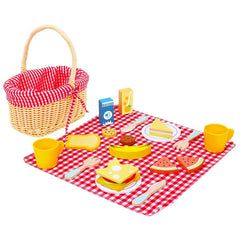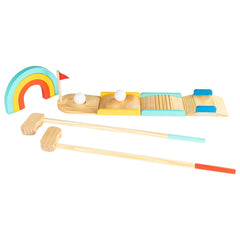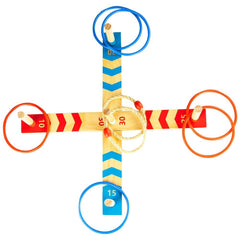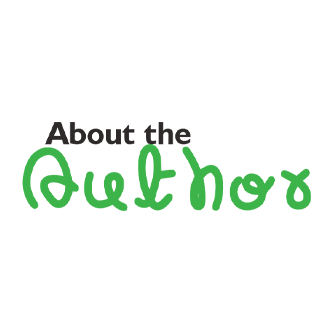A wooden play shop is an exciting tool for kids who want to act out real-life shopping scenes. This type of play encourages imagination, role-playing, and problem-solving, making it an essential part of early learning.
Barnshenn believes in enhancing these experiences with creative ideas. Simple additions in the form of a mini shopping list, pretend coupons, or price tags can make your wooden play shop even more thrilling. Best of all, these DIY add-ons are simple, affordable, and use things you probably already have at home.
Let’s look at 9 DIY add-ons that can take your child’s playtime to the next level!
Mini Shopping List
Start by making a mini shopping list. A small shopping list makes playtime feel real. You can use index cards, sticky notes, or old paper. Further, you can either draw or write items like apples, milk, or bread. Keep it simple and clear and laminate it if you want to use it again.
Pretend Coupons
Create pretend coupons using leftover paper or card. Try fun deals like "Buy 1 Get 1 Free" or "50% Off Bananas" to replicate everyday situations at the grocery store. Add colours or stickers for extra fun. Once completed, present them to your child prior to their playtime. You can also hide a few in the wooden play shop for surprise finds!
Price Tags and Barcode Stickers
Another great idea is price tags and barcode stickers. You can use sticker labels or cut out paper pieces. Write prices and draw barcodes. Once finished, attach the labels to the toys at the supermarket and use a toy scanner or phone to "scan" the products.
Your kids will gain familiarity with numbers through this activity. Further, your child will enjoy being the cashier.
DIY Packaging
You can also create DIY packaging. Use empty boxes, food containers, or tissue rolls. Wrap them in paper or label them with pretend brand names. Kids enjoy stocking shelves with items that look real. It's a rewarding way to teach recycling, too.
Play Money and Credit Cards
Play money and credit cards are always a hit. Cut the colourful paper into dollar-sized pieces. Write numbers on each note. You can make pretend cards using cardboard. Add your child’s name and “Bank of Barnshenn” on the front. It teaches counting and role play in a delightful way.
Bags and Trolleys
Don’t forget the bags and trolleys. Use mini tote bags or paper bags with handles. You and your child can decorate them together. For trolleys, use doll strollers or small baskets. This makes shopping more exciting in their children’s play shop.
DIY Receipts
Want to take it further? Print or draw your receipts. Use a notebook or plain paper. Add lines for items, prices, and a total. Write, “Thank you for shopping at Barnshenn.” Let your child tear it off and hand it to the customer. It builds structure into play.
Themed Shopping Days
Add theme-based shopping days. This approach keeps things fresh and fun. Some ideas:
- Fruit and Veggie Day
- Back to School Sale
- Barnshenn Holiday Market
Budget Bonanza Day
Use simple signs and props to match the theme. Let your child be the shop owner or the buyer. Rotate themes weekly for variety.
Store signs and clocks
Create a store sign using cardboard or a poster sheet. You can name it after your child. Please write the store hours below the sign. You can even use clock cut-outs and make the wooden play shop feel more real and exciting!
What Makes Our Children's Grocery Store Special?
Fun Role-Play Experience
Kids can engage in imaginative play by pretending to shop and sell, helping them develop social skills and empathy. This kind of role-playing lets them understand everyday scenarios in a playful way.
Sparks creativity and imagination
The variety of items encourages kids to think creatively and explore new scenarios. They can create their own shopping stories, improving problem-solving skills and storytelling abilities in the process.
Portable and Interactive Features
Thanks to its rolling wheels and easy-grip handle, this toy grocery store is easy to move. This feature lets kids play indoors as well as outdoors, ensuring active play.
Pretend Money for Learning
The set includes pretend banknotes that help kids learn about money. Through fun role-playing, they practise counting, making transactions, and understanding the value of money.
Conclusion
These ideas are easy to make and mostly use things you already have at home. They bring learning and laughter into one space. Each add-on adds more depth, encouraging your child to learn numbers, sorting, reading, and social interaction. Most importantly, they create lasting memories with you.
These simple moments make their wooden play shop even more special. Barnshenn understands this. Therefore, we design toys that grow with imagination, turning your toy supermarket into a hub of endless opportunities.
FAQs –
Q1: What age is best for a wooden play shop?
Ans: A wooden play shop attracts a diverse range of children. While younger children may enjoy pretending to shop, older kids can take charge and manage the store. But, broadly speaking, it is ideal for children who are aged 2 and above.
Q2: Can I use real food packages for play?
Ans: Yes. Clean and reuse boxes and containers. Kids love using real-looking props in their toy supermarket. Just make sure the items are safe for play and are free from sharp edges or other hazards.
Q3: How do DIY items help with learning?
Ans: DIY items help build skills in counting, sorting, reading, and imagination. Play becomes enjoyable and educational at the same time. Your child will also enhance their fine motor skills while creating and handling the DIY props you make together.





